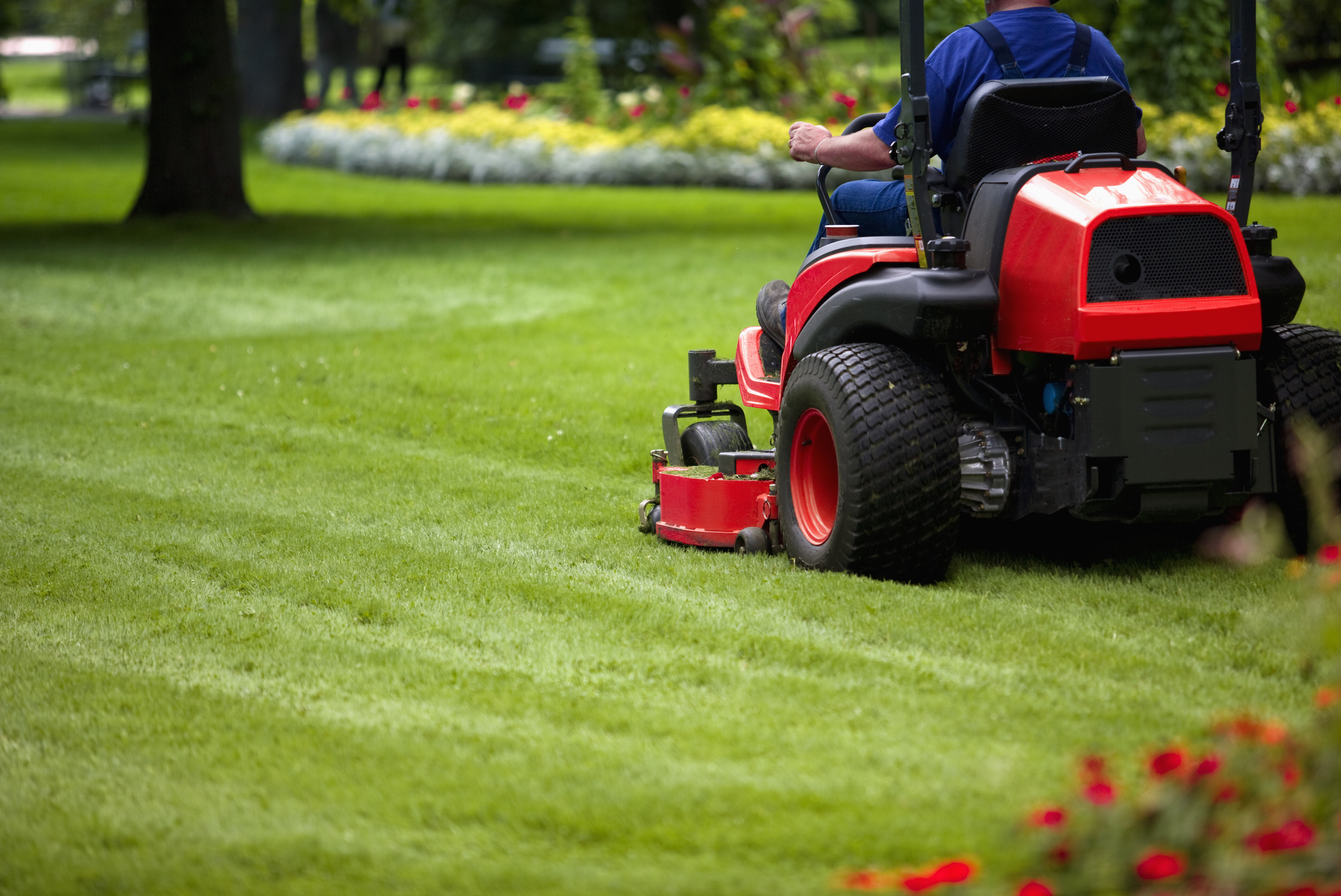Lawn mowers may seem like just an ordinary piece of equipment during warmer months, but they are dangerous machinery to young children who ride on them or play near them. Every year 10,000 children are injured by lawn mowers, and these injuries are the number one cause of major limb loss under 10 years of age in the U.S.
Safety experts urge parents and caregivers to keep children off lawn mowers and indoors with supervision while a lawn mower is in use.
A new University of Iowa study revealed that most severe childhood lawn mower injuries occurred when children, as bystanders, were struck by the lawn mower while being in close proximity. Mostly, children were injured after not being seen or heard by the driver while the driver was turning or reversing the lawnmower. Bystander injuries (69%) were more common than those resulting from falling off the lawn mower while riding as a passenger (24%). Riding lawn mowers have no seats for passengers.
Despite increased mower safety specifications and requirements, pediatric lawn mower-related injury incidence rates have remained constant over the past 40 years, said Pam Hoogerwerf, manager of the University of Iowa Stead Family Children’s Hospital Injury Prevention and Community Outreach Program.
“This illustrates the need for studies like this and the importance for new strategies to get the message out to prevent lawn mower injuries,” she said.
The study surveyed members of two Facebook groups that offered support for those affected by lawnmower injuries. Most survey participants were a parent of a child injured by a lawnmower (71%) and the rest were adults who suffered a lawnmower injury during childhood. 92% of those surveyed reported an amputation due to the lawn mower injury and/or a permanent disability. Amputations were more common among bystanders (97%) than passengers (79%).

Children and adolescents of all ages get injured from lawn mowers, but younger children are more likely to suffer injuries as bystanders.
More injuries occurred while drivers of lawnmowers moved in reverse (79%) than when moving forward (29%). Limited visibility from blind spots while reversing can prevent drivers from having a complete view of the area behind the lawnmower. A common scenario: A young child approaches the lawnmower as it is reversing or turning, the lawnmower driver doesn’t see or hear the child (though sometimes the child is known to be in the area), and the child is knocked over or slips under the mower’s rotary blades.
A critical finding of the study found that a majority of children injured as bystanders (73%) had ridden on a lawnmower at least once previously as a passenger.
Dr. Charles Jennissen, a pediatric emergency medicine physician at the University of Iowa Carver College of Medicine, said allowing children on riding lawn mowers is not only a danger while the mower blades are in operation but at other times as well.
“Giving lawn mower rides acclimates young children to the loud noises of mowers, desensitizes them to their inherent dangers, and converts the mowers from working machinery to a riding plaything in children’s minds,” he said. “Many of the children injured as bystanders in our study were approaching the lawn mower to get a ride.”
Upper extremity injuries (e.g., to hands or arms) were more common for passengers (21%) than bystanders (3%). A common passenger scenario: A young child falls or slips off the lawnmower after it hits uneven or rough terrain, or as the lawnmower is turning.
Tate’s Army helped develop the study’s survey. This non-profit organization educates and advocates for lawn mower safety and was started by the parents of Tate, a boy who was seriously injured by a lawnmower at 3 years of age.
As Tate returned home from running errands with his mom and older brother, he darted to see his dad who was reversing the riding mower and did not see his son. Tate was under the mower from his belly button to his toes and was transported to the hospital with critical injuries. Tate survived and doctors were able to save his legs, but he underwent over 30 surgeries to repair his vital organs and legs.
Follow these safety tips from the University of Iowa Stead Family Children’s Hospital:
- Never ride with a child on a lawn mower, even if the blades are off
- Never allow a child to play outside while a lawn mower is in use
- Closely supervise children inside the home when mowing is being performed outside
- Never mow in reverse
Older children:
- Children and teens must be both strong and mature enough to operate mowers
- Children at least 12 years old can operate a push mower
- Teens at least 16 years can operate a riding lawn mower
- Ensure your child understands how the mower operates, and thoroughly reads its operation manual before ever starting the machine
- Teach your child how to stop the lawn mower engine quickly in the event of an emergency
- An adult should supervise teens before they are allowed to operate a lawn mower on their own
Published April 4, 2024